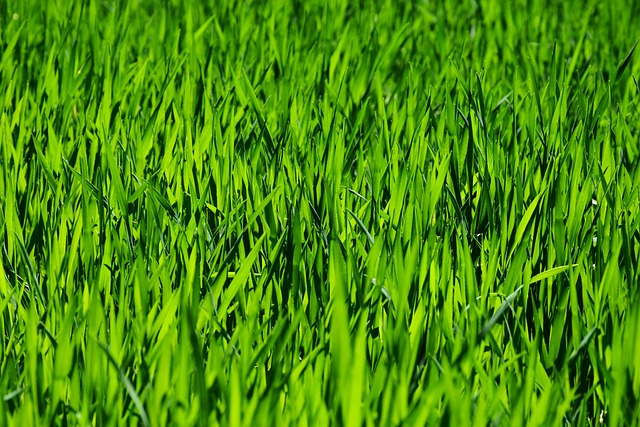Lawn Care and Landscaping are integral for maintaining a healthy, vibrant lawn that complements your outdoor space. A consistent maintenance routine is key, involving the right height for mowing different grass types, regular aeration to prevent soil compaction, and tailored fertilization that considers local soil conditions and climate. Efficient irrigation systems, such as drip or smart sprinklers, should be used to conserve water and cater to your plants' specific needs. Mulching helps retain moisture and supports root growth. Selecting drought-resistant grass varieties can enhance both the resilience and beauty of your lawn. Additionally, understanding soil composition and its impact on plant health is crucial for fertilization and amending soils. By implementing these strategies with attention to detail and environmental considerations, you can achieve a visually appealing, healthy landscape year-round through dedicated Lawn Care and Landscaping efforts.
Embarking on a journey to cultivate a flourishing garden and enhance your property’s allure is both a fulfilling endeavor and an art form that marries practical lawn care with aesthetic landscaping. This article serves as a comprehensive guide, delving into the essential practices for vibrant lawn care, strategic landscaping for visual appeal, and techniques to elevate curb appeal. From understanding soil composition to mastering mowing techniques, from selecting plants that thrive in your environment to integrating hardscapes for an enchanting touch, this piece will equip you with the knowledge to maintain a lush lawn year-round and create a captivating outdoor space that reflects both nature’s beauty and your personal style. Dive into the world of Lawn Care and Landscaping to transform your garden into a living masterpiece.
- Essential Practices for Vibrant Lawn Care
- – Understanding Soil Composition and Fertilization Needs
- – Effective Irrigation Strategies for Optimal Hydration
Essential Practices for Vibrant Lawn Care

A lush, vibrant lawn is often the hallmark of a well-maintained landscape. Consistent lawn care practices are key to achieving this desirable outcome. To maintain a healthy lawn, regular mowing at the correct height for your grass type is essential. This encourages root growth and reduces weed competition. Aeration should be performed annually to alleviate soil compaction and ensure water, air, and nutrients can reach the grass roots effectively. Fertilization tailored to local soil conditions and climate patterns is another critical aspect of lawn care. Using a balanced, slow-release fertilizer promotes steady growth without overwhelming the lawn with excessive nitrogen. Additionally, proper irrigation techniques are crucial; deep, infrequent watering is preferred over shallow, frequent sprinkles to promote drought-resistant grass varieties. Regularly removing thatch and overseeed plants, such as clovers or dandelions, through a combination of hand-pulling and spot-treating with selective herbicides, will further enhance your lawn’s appearance. Lastly, consider the benefits of integrating landscape lighting to accentuate the beauty of your cared-for greenspace even after sunset. By adhering to these practices, homeowners can enjoy a verdant, inviting lawn that adds aesthetic value and comfort to their property throughout the year. Lawn care and landscaping are not one-time tasks but ongoing commitments that reward attentiveness and care with a visually stunning and functional outdoor space.
– Understanding Soil Composition and Fertilization Needs

Maintaining a healthy garden requires a deep understanding of soil composition and fertilization needs, which are fundamental to lawn care and landscaping. Soil is not merely a medium for plant growth; it’s a complex mixture of organic matter, minerals, water, air, and an array of living organisms like bacteria, fungi, and earthworms. Each component plays a distinct role in soil health. For instance, organic matter improves soil structure, enhances its ability to hold onto water and nutrients, and supports beneficial microbial life. To optimize fertilization, it’s crucial to conduct soil tests periodically to assess nutrient levels and pH balance. This data informs the selection of appropriate fertilizers that cater to your garden’s specific needs, ensuring that plants receive essential nutrients like nitrogen for lush green foliage, phosphorus for robust root development, and potassium for overall plant health. Proper lawn care and landscaping involve understanding how soil type affects nutrient uptake and the best practices for amending soils when necessary. By tailoring your fertilization strategy to the unique characteristics of your garden’s soil, you can create a thriving landscape that is both beautiful and resilient.
– Effective Irrigation Strategies for Optimal Hydration

Maintaining a lush, vibrant garden requires strategic planning, particularly in the realm of lawn care and landscaping. Effective irrigation is pivotal for optimal hydration of plants, ensuring they receive the necessary amount of water without waste. Drip irrigation systems are a smart choice for targeted watering, delivering moisture directly to the plant’s root zone, thus reducing evaporation and conserving water. Another approach is to use sprinkler systems with timers and sensors that activate based on soil moisture levels or weather forecasts, adjusting to rainfall patterns and preventing overwatering. Mulching around plants can also help retain soil moisture, keeping roots cool and moist. By employing these irrigation strategies, gardeners can achieve both efficient water use and the flourishing landscapes they desire, making lawn care and landscaping a harmonious blend of science and aesthetics.
In addition to choosing the right irrigation system, it’s crucial to understand the specific needs of your plants and the local climate conditions. For instance, certain plants may require less frequent but deeper watering to encourage strong root growth, while others might thrive with more frequent, shallow watering. Landscaping design plays a significant role as well; strategic placement of plants according to their water requirements can lead to a more efficient and beautiful garden. Implementing grass varieties that are drought-resistant or native to the region can further reduce the need for supplemental irrigation while still contributing to the garden’s visual appeal. By integrating these considerations into your lawn care routine, you can create a resilient, low-maintenance landscape that withstands environmental challenges and remains aesthetically pleasing throughout the year.
In conclusion, maintaining a healthy, vibrant lawn requires a nuanced approach that encompasses understanding soil composition and fertilization needs, as well as implementing effective irrigation strategies. These essential practices form the cornerstone of comprehensive lawn care and landscaping. By tailoring these methods to your unique environment, you can ensure your garden not only thrives but also becomes a source of pride and beauty. A well-maintained lawn is more than just an aesthetic choice; it’s a testament to the harmony between nature and nurture, and a commitment to continuous growth and environmental stewardship.
